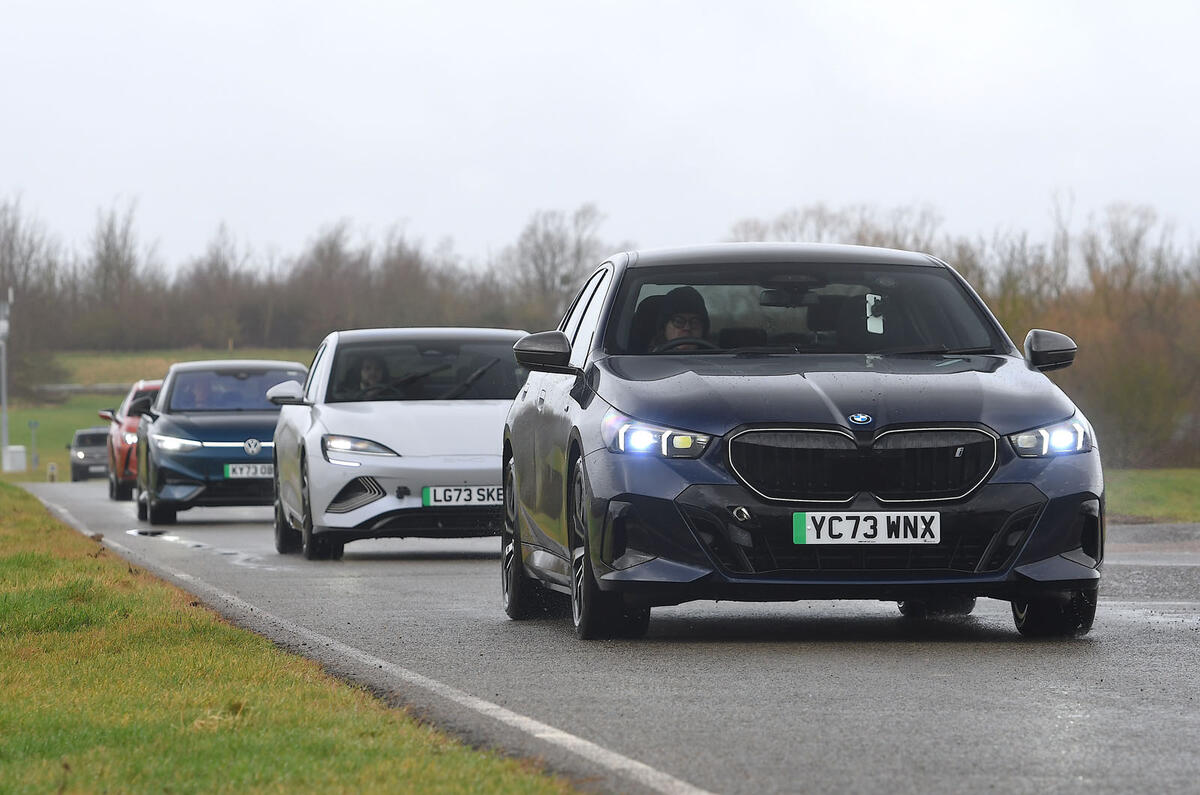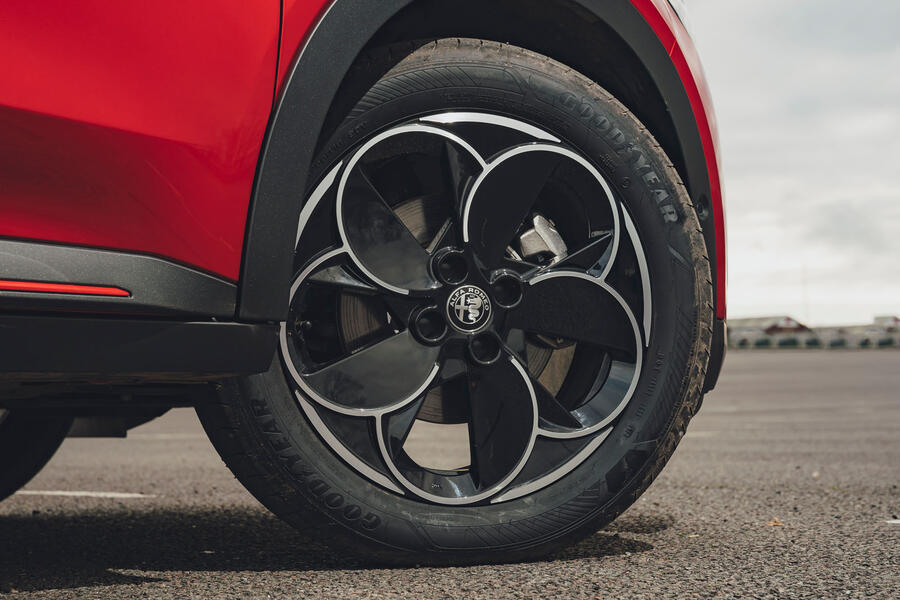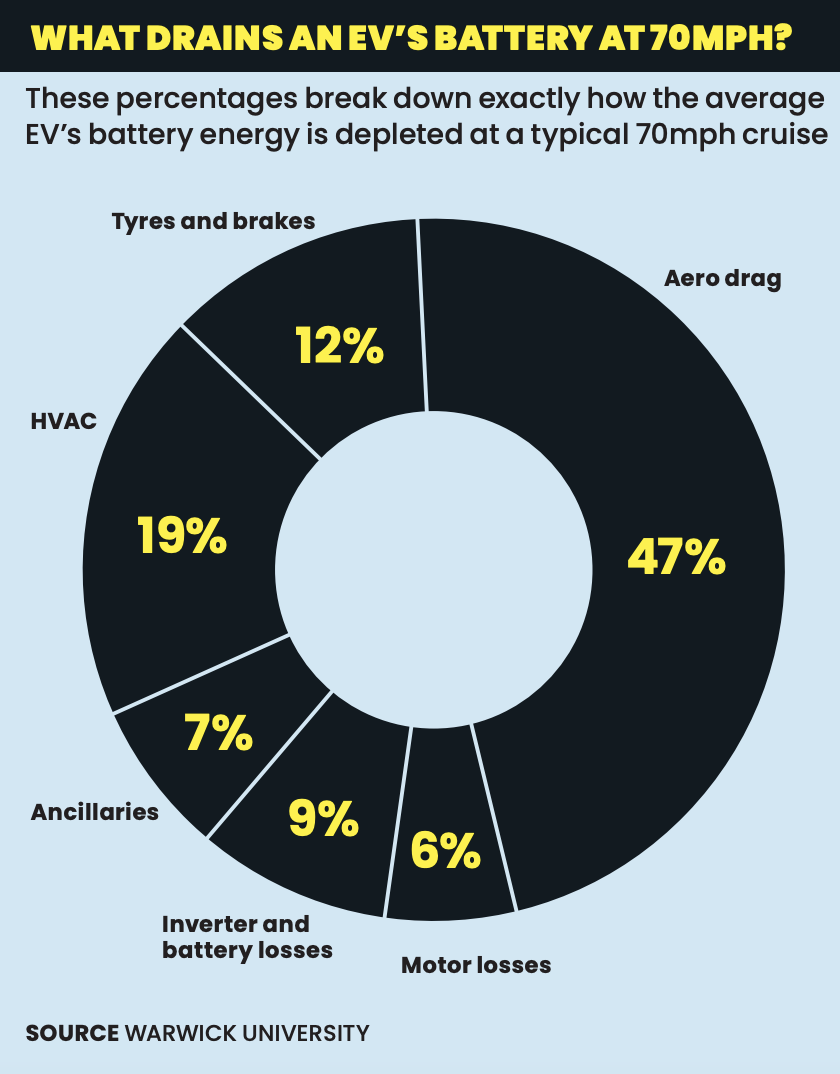Scrutinise the spec of an electric car and there’s a figure in miles per kilowatt hour (mpkWh) for vehicle energy efficiency, typically an average of between 3.0 and 4.0.
There’s no doubt efficiency is important, both for engineers, who use it as a yardstick of achievement, and for drivers, for whom it is the key to understanding battery range.
The next big efficiency race for EV makers is to be the first to achieve 5.0mpkWh. This figure is important because, for a typical 50kWh battery pack, the difference between 4.0mpkWh and 5.0mpkWh is 50 miles more range. So there’s a prize to be won.
And it won’t be long until the first 5.0mpkWh cars hit the roads. Indeed, in July, US-based Lucid claimed to be first to it with its Air Pure saloon, while a prototype of the upcoming Mercedes CLA recorded 5.2mpkWh.
It may seem like a relatively small incremental improvement, but it takes a lot to achieve it, from low-drag tyres to even using a different type of brake light. Here, we take a further look.
Aerodynamics

Reductions in aerodynamic drag will be the priority in the hunt for 5.0mpkWh. According to figures supplied by Warwick University, 47% of a battery’s energy is overcoming wind resistance at 70mph.
In practice, this means development budgets shifting to wind tunnels and sims, and designers reducing frontal area and honing details to reduce Cd (coefficient of drag).
Hyundai, for example, has prioritised low drag on the Ioniq 6 and achieved a 0.21 Cd.
The next stage will be costly but worthwhile, according to Professor David Greenwood of Warwick University: “Even a small reduction in the CdA [Cd and frontal area] has a significant impact on range at high speed, because drag power is proportional to the velocity cubed.”
Heating, ventilation and air conditioning (HVAC)

Right on the frontline of energy efficiency gains, HVAC contributes the second-biggest drain on the battery. “You really need to care about every watt used in an electric car, so parasitic losses have to be minimised,” says Greenwood.
HVAC accounts for 19% of battery output at cruising speed, but in extreme heat or cold it could reach 30%. Prioritising the heating of seats and the steering wheel, which draw just a few hundred watts, over full cabin condition, will help in the pursuit of a 5.0mpkWh goal.










Join the debate
Add your comment
This article claims self driving computers are using 5kW... I checked and a Tesla is about 70 watts in self drive mode. Please can we have some well researched articles.
Auto car seem to be consistently anti Tesla, so I can only assume are quietly funded by legacy automakers. This is a shame as it erodes my respect for a once great publication. So first off a correction on heat pumps, Tesla include them as standard on all new cars. Secondly a correction on efficiency, the latest Model 3 long range has a 75kWh battery and a 436 mile official range. My wife's 2023 model 3 dual motor with all season tyres did the circa 90 mile run from Garstang, up the M6 at 70 and across the A66 at 60 to Cockermouth achieving a 4.16 miles per kWh. So this included going over Shap and various other hills and finishing the journey at 500 feet above sea level. It was 5 degrees and the cars done 35,000 miles. It's also worth pointing out the Model S launched over a decade ago has a drag coefficient of 0.21. My point is 5 miles per kWh has already been achieved and strangely Autocar don't mention Tesla, but Tesla don't pay for advertising. As a side note my other vehicles are riteous gas guzzling monsters, but I've been surprised by just how capable EVs are... I was sceptical.
When autonomous driving comes along and each car knows where the other is.Then cars can shed lots of the reinforcing weight and that goes into protecting humans from themselves.